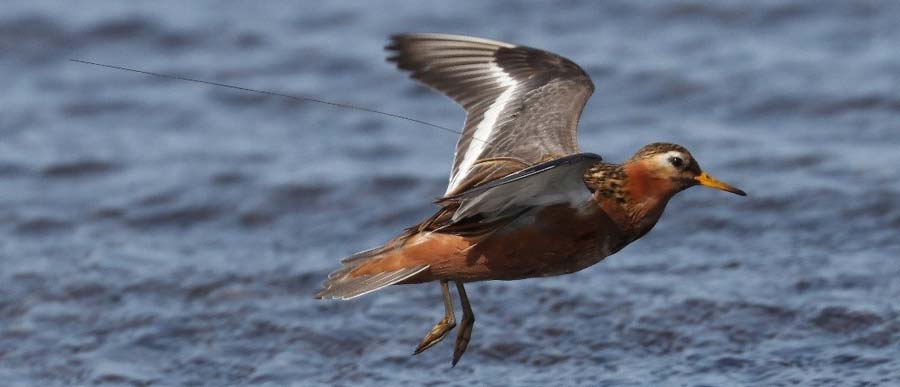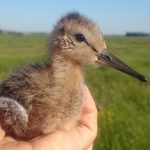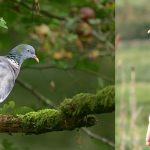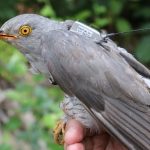← Back
Red Phalaropes: Their Migratory Routes and Behaviors with Argos

Red phalaropes are migratory birds breeding in the North American continent and wintering in pelagic regions of the Atlantic and Pacific oceans from northern California to Peru/Chile. Argos helps to known more about their migratory routes and behaviors.
Red phalaropes (Phalaropus fulicarius) are migratory birds that breed in tundra regions of the North American continent and winter in pelagic regions of the Atlantic and Pacific oceans from northern California to Peru/Chile. While classified as shorebirds, they behave more like seabirds during the nonbreeding season, feeding on surface zooplankton in the ocean environment. Beyond this, little is known about their migratory routes, including their stopovers, or about the connectivity between breeding and wintering areas.
Recent evidence suggests that red phalaropes are declining, likely due to threats during the nonbreeding season when they switch to a marine lifestyle.
Tracking red phalaropes
Red phalaropes were tagged using 2-g solar-powered Argos platform transmitter terminal (PTT) tags at 7 Arctic-breeding sites in the Alaskan and Central Canadian Arctic, with 72 females tagged during prebreeding and 31 males tagged while incubating on nests (only males incubate eggs and tend young). Of the 103 red phalaropes tagged, 72 individuals (50 females, 22 males) transmitted locations after nesting, including 67 of 94 in Alaska and 5 of 9 in Canada. The locations for each bird were modeled to produce 1 location every 8 h.
Those locations were compared with environmental data, including sea ice conditions (daily sea ice concentration and the marginal ice zone), sea surface temperature, sea surface salinity, and chlorophyll-A.
More info about animal tracking with Argos
![Migration routes and stopover areas for female (red circles) and male (blue circles) red phalaropes during south and northward (one bird from Chile) migration (June–March) from 2017–2020; inset map illustrates the Beringia region in more detail. Size of the circles depicts the number of days an individual spent within a stopover area before migrating again. (from [Saalfeld et al., 2024])](https://www.argos-system.org/wp-content/uploads/2024/05/Migration-routes-and-stopover-areas-for-female-and-male-red-phalaropes-621x1024.jpg)
Most of the birds tagged in Alaska traveled west and then south through the Bering Strait towards the Pacific Ocean, while those tagged in the Central Canadian Arctic migrated east towards the Atlantic Ocean. However, two females and one male tagged in Alaska traveled east into Canada, at least initially – two subsequently turned back west and the other stopped transmitting.
Overall, red phalaropes exhibited large individual variability in their departure dates, timing, routes, and habitat selected during post-breeding migration, even when they were captured at the same breeding site. Routes used were often extremely different than the most direct one, with red phalaropes travelling in all directions, with much backtracking and meandering. This could be due to foraging efforts in an ever-changing pelagic environment with patchy food resources.
The average travel for an individual before its tag stopped transmitting was about 5400 km; however, one female traveled over 33 000 km (including part of its return north after wintering off the coast of Chile).
489 individual stopover areas were identified by clustering consecutive stopover locations for each individual. They ranged from less than 1 to about 54 000 km2 (mean = 1880 km2) in size and were occupied for less than 1 day up to 86 days.
Red phalaropes, especially females which migrate earlier in the year, were often associated with the marginal ice zone in the Beaufort and Chukchi seas. Globally, stopover areas were often in areas of greater food availability (high chlorophyll-A), including highly productive ocean currents and near ocean fronts or upwellings.
Global climate change and the resulting loss of sea ice in the Arctic Ocean is likely to have a negative impact on the species, as sea ice can provide an important foraging habitat during the post-breeding period. Ocean warming is also likely to impact food quality and availability during migration and when wintering. Other anthropogenic impacts from oil and gas exploration, vessel traffic, wind farm development, and plastic pollution are also potentially important threats that need further investigation.
Unlike many other long-distance avian migrants, red phalaropes are quite variable in their timing and path of migration, potentially allowing the species to adapt to changing conditions during their migration. To what extent they can adjust, however, remains unknown.
Reference & links
- Saalfeld ST, Valcu M, Brown S, English W and others (2024) From land to sea: the fall migration of the red phalarope through the Western Hemisphere. Mar Ecol Prog Ser 729:1-29. https://doi.org/10.3354/meps14531
- Alaska Shorebird Webpage : https://www.fws.gov/office/alaska-migratory-birds/shorebirds-alaska
- From Land to Sea: The Fall Migration of the Red Phalarope through the Western Hemisphere | U.S. Fish & Wildlife Service (fws.gov)




